Nvidia GeForce GTX 1080 Ti Review
Nvidia's Pascal architecture marked a new milestone for PC graphics last year, with graphics chips that were considerably faster and more efficient than before, driving smooth frame rates at 4K resolutions, delivering very fast graphics on laptops, and doing and then at a toll that at the time we institute more justified.
AMD answered with new Polaris GPUs, an impressive family unit of new Radeon chips that brought smashing mainstream solutions that well-nigh gamers could afford. We recommended (and however recommend) some of the latest Radeons at sure price points, yet unable to compete at the very high-end, AMD offerings failed to generate quite the same amount of buzz as Nvidia'southward.
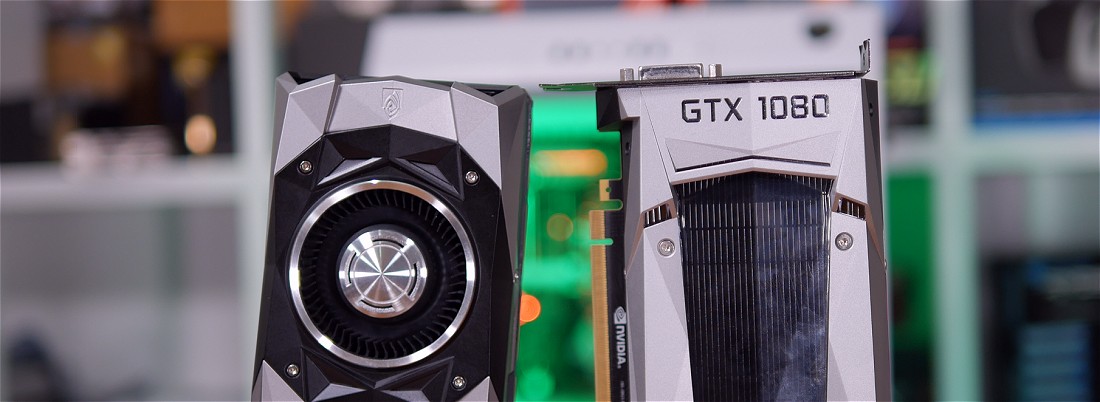
You might recall, we awarded the GeForce GTX 1080 our first ever perfect score which was met with controversy. But to exist articulate, that score was awarded to the GTX 1080 GPU and not the Founders Edition card sold directly by Nvidia which we noted at the time carried an unfortunate toll premium.
The flagship GTX 1080 was followed by the GTX 1070, 1060, Titan X, GTX 1050 Ti and GTX 1050. This had Pascal covering price ranges from $110 all the way upward to an eye watering $1200.
The spring from the $700 GTX 1080 to the $1200 Titan Ten was the largest price gap in the series, and so it made sense that if Nvidia was to release another part that would sideslip in there. For over a calendar month we've been expecting a cut downward version of the Titan X for somewhere betwixt $700 and $1000, depending on how much gets shaved off. We had causeless Nvidia would simply shut off one or two SM units and call it a day.
However, final week we learned that the GTX 1080 Ti was going to be unlike than what everyone expected. Instead of a cutting down Titan X nosotros're getting a full 3584 CUDA core enabled GP102 GPU. A few ROPs accept gone missing which has had a knock on effect for the retentiveness subsystem which sees a memory motorcoach beingness used. Nvidia has come up with a workaround for this which we will get to shortly.
For now, let'south take a closer look at the GTX 1080 Ti Founders Edition graphics bill of fare…
GeForce GTX 1080 Ti Specs
Because the GTX 1080 Ti is based on the same GP102 dice every bit the Titan Ten, we practice notice an eight-pivot as well as a vi-pin PCIe ability connector. Other than that, out of the box, the cards wait very much the same.

Nether the hood y'all volition find a full 3584 CUDA core enabled GP102 GPU made upward of an incredible 12 billion transistors. There are also 224 texture units though the ROPs have been reduced by eight%, from 96 to a rather odd 88. This sees the 12GB buffer of the Titan X reduced to 11 GBs, once more another odd number. Once more GDDR5X retentivity is being used and it operates at an incredible frequency of 2750 MHz.
Nvidia says they have been working closely with Micron to improve the signal noise and jitter of their loftier speed GDDR5X retentivity. The improvements have allowed Nvidia to striking 11 Gbps on the memory which is faster than the 10 Gbps retentiveness speed of the Titan 10 and GTX 1080.

The peak compute throughput of the GTX 1080 Ti is also slightly higher than the Titan Ten due to the Ti's higher Boost clock and memory bandwidth. Although the Ti features a narrower 352-scrap retention bus, the higher clocked GDDR5X memory is able to compensate. The end consequence is an impressive memory bandwidth of 484 GB/due south. That's not far off the functioning of outset generation HBM.
Officially, Nvidia is claiming that the GTX 1080 Ti will be roughly twenty to 40% faster than the vanilla 1080, given the specs that certainly sounds right. Impressively, the 1080 Ti features the same 250-watt TDP rating as the 980 Ti. It as well manages to cram more transistors in a smaller die area of merely 471mm2, some xx% smaller for 50% more transistors.
GTX 1080 Ti Fair Price Edition
With the card on hand, I tin say information technology looks almost identical to the GTX 1080 and 1070, and I love the wait of these Founders Edition cards. Of course, there's the lilliputian Ti nomenclature tacked onto the stop of the GTX 1080 label which looks a bit special, even if it isn't correctly centered -- this ane messed with my OCD.
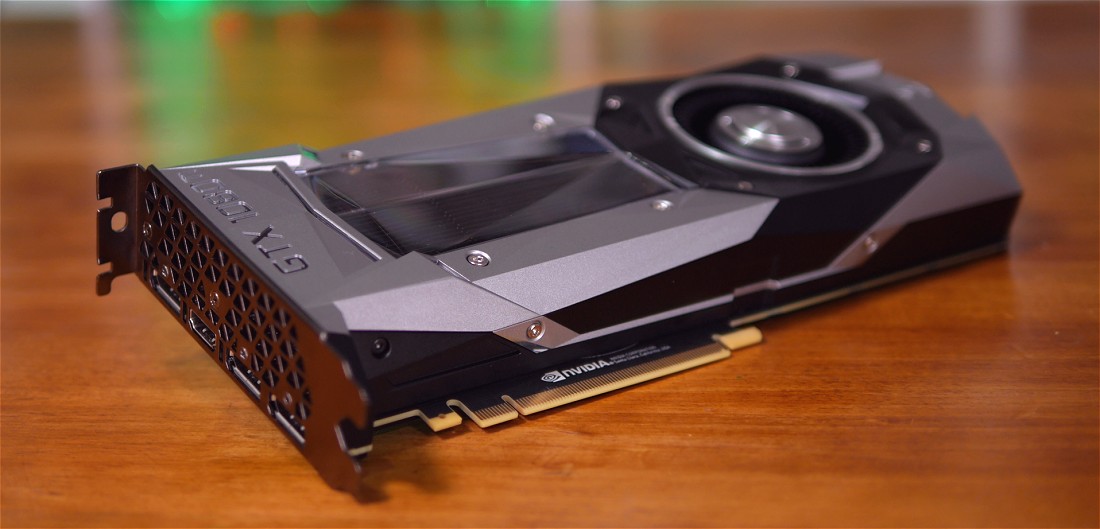
Nvidia too says that the 1080 Ti features improved cooling performance that will provide lower temps while making less noise, so that's a win win. For those wondering the Ti model weighs 1041 grams while the original 1080 tips the scales at 1029 grams.

The housing of the GeForce GTX 1080 Ti Founders Edition features a dice bandage aluminum torso and includes a low-profile backplate with a removable section. This removable section is useful when two GeForce GTX 1080 Ti cards are paired straight adjacent to each other in an SLI system, where the lower card receives less airflow due to the other card being placed directly above it. By removing a portion of the backplate, the obstacle is reduced, which helps to improve airflow.
A copper vapor bedroom is used to cool the GTX 1080 Ti's GP102 GPU. This vapor chamber is combined with a large, dual-slot aluminium heatsink to dissipate heat off the chip. A radial fan and so exhausts this hot air through the dorsum of the graphics carte and exterior the PC'south chassis.

To ameliorate the performance of the GPU cooler, Nvidia engineers take designed a new high airflow thermal solution that provides 2x the airflow area of the GeForce GTX 1080. To reach this, the DVI connector that's traditionally been placed above the DVI and HDMI connections on the card bracket has been removed. Instead, this area is used to provide a larger exhaust for hot air to exist expelled from the GPU.
Compared to the GeForce GTX 1080 Founders Edition lath, the GTX 1080 Ti'southward power subsystem has been substantially enhanced. If yous retrieve, all GeForce GTX x Series GPUs were equipped with a dual-FET power supply on both the GPU and retentiveness, which provided cleaner power to these components compared to prior GPUs. This improved power efficiency, reliability, and overclocking.
For the GTX 1080 Ti Founders Edition we've incorporated a 7-stage 2x dual-FET ability blueprint that's capable of supplying up to 250 amps of power to the GPU.
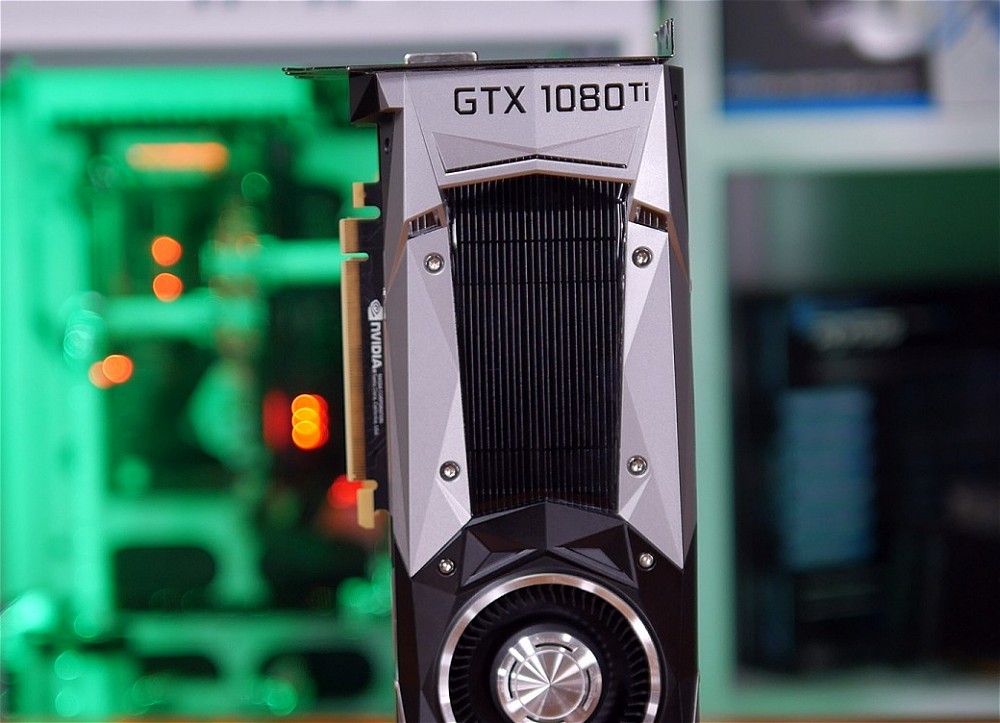
As I understand it just this Founders Edition card volition go bachelor initially with custom board partner cards to follow a week or two after. The proficient news for early adopters is that Nvidia has dropped the ridiculous Founders Edition tax, then this reference card will come in at the starting price of $700. That's 42% less expensive than the Titan X which will remain at $1200.
What'due south more, in an unexpected move Nvidia is cannibalizing their ain product line to an extent, so the GTX 1080's MSRP is dropping past $100. Taking the much loved 1080 down to just $500. That's pretty incredible news and that 16% saving has already been passed onto consumers prior to the 1080 Ti's release.
Test Arrangement Specs
- Intel Core i7-7700K @ 4.9GHz
- Asrock Z270 Gaming K6
- 32GB DDR4-3000 RAM
- Samsung SSD 850 EVO 2TB
- Nvidia Titan X (Pascal)
- Sapphire RX 460 Nitro
- Sapphire RX 460 Nitro
- MSI RX 470 GamingX 4G
- MSI RX 480 GamingX 4G
- MSI RX 480 GamingX 8G
- AMD Radeon R9 Fury X [4GB]
- Gigabyte GTX 1050 G1 Gaming
- Gigabyte GTX 1050 Ti G1 Gaming
- MSI GTX 1060 GamingX 3G
- EVGA GTX 1060 FTW+
- Gigabyte GTX 1070 G1 Gaming
- Gigabyte GTX 1080 G1 Gaming
- Nvidia GeForce GTX 1080 Ti
- Nvidia Titan XP
- Windows 10 Pro 64-bit
Benchmark Time
Gaming Benchmarks: Battlefield i, Far Cry Primal, Civilization Vi
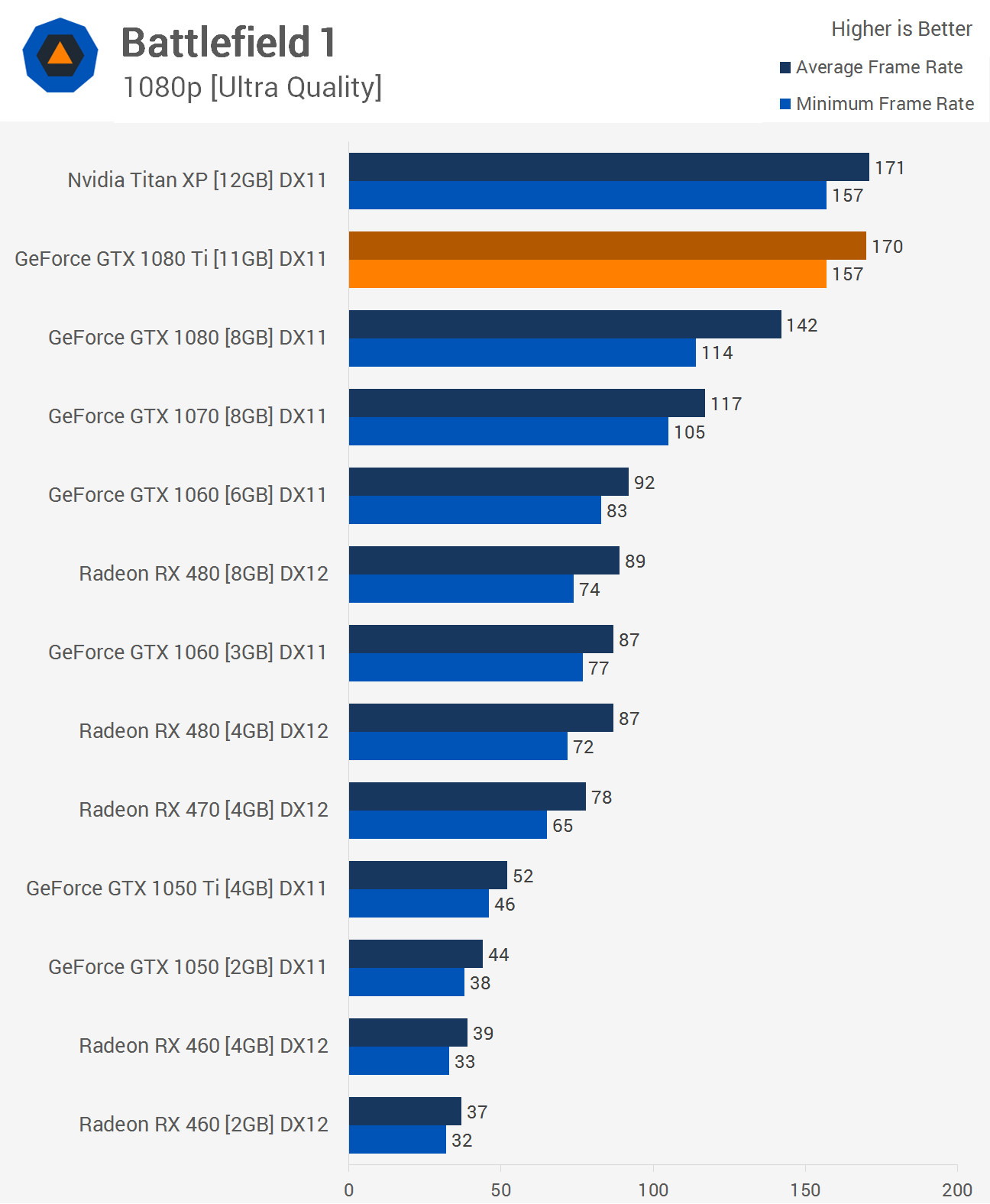

Those seeking extreme frame rates in Battleground 1 will certainly receive them at 1080p with the 1080 Ti as it matched the functioning of the Titan XP. This was also the case at 1440p and here Nvidia's new flagship gaming graphics carte pushed well over 100 fps at all times.

At the 4K resolution Battlefield 1 looks equally sharp as the edges in a generic ATX case, thankfully though with the GTX 1080 Ti in accuse of the rendering work information technology'south a painless experience. Hither we see a smooth 75 fps boilerplate while frame rates never dipped below 66 fps. As expected this again puts it roughly on par with the Titan XP, dropping just a few frames behind.
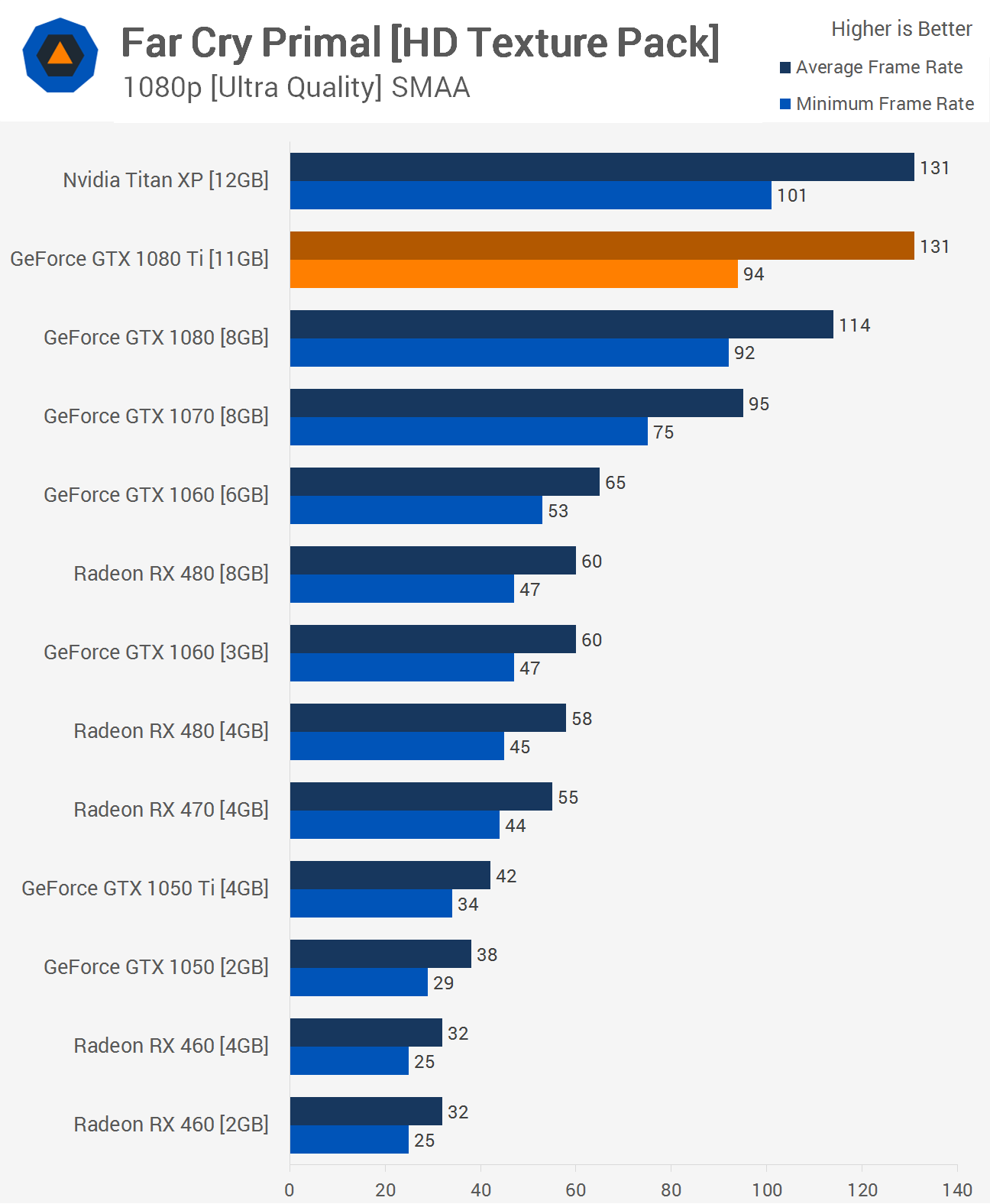

Here at 1080p we see a rather heavy CPU bottleneck at 1080p. At 1440p the 1080 Ti once again roughly matches the Titan XP making information technology 21% faster than the standard GTX 1080. Not a bad results given frame rates stayed higher up 80 fps at all times.

Moving to 4K the 1080 Ti tip toes ahead of the Titan XP though with with 2 fps in it the performance is obviously very like. Once again when compared to the standard 1080 we are seeing 20% more than functioning here.
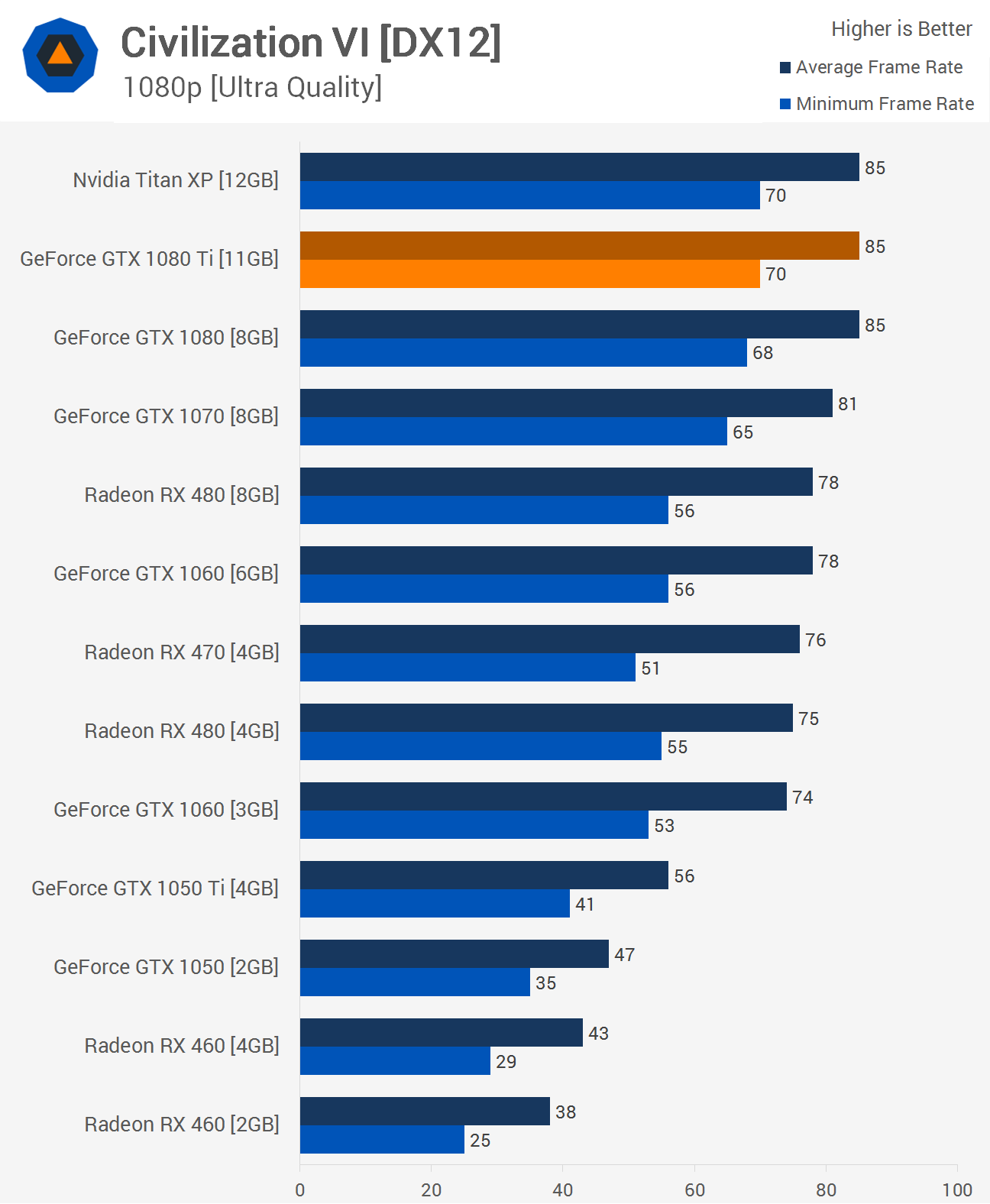
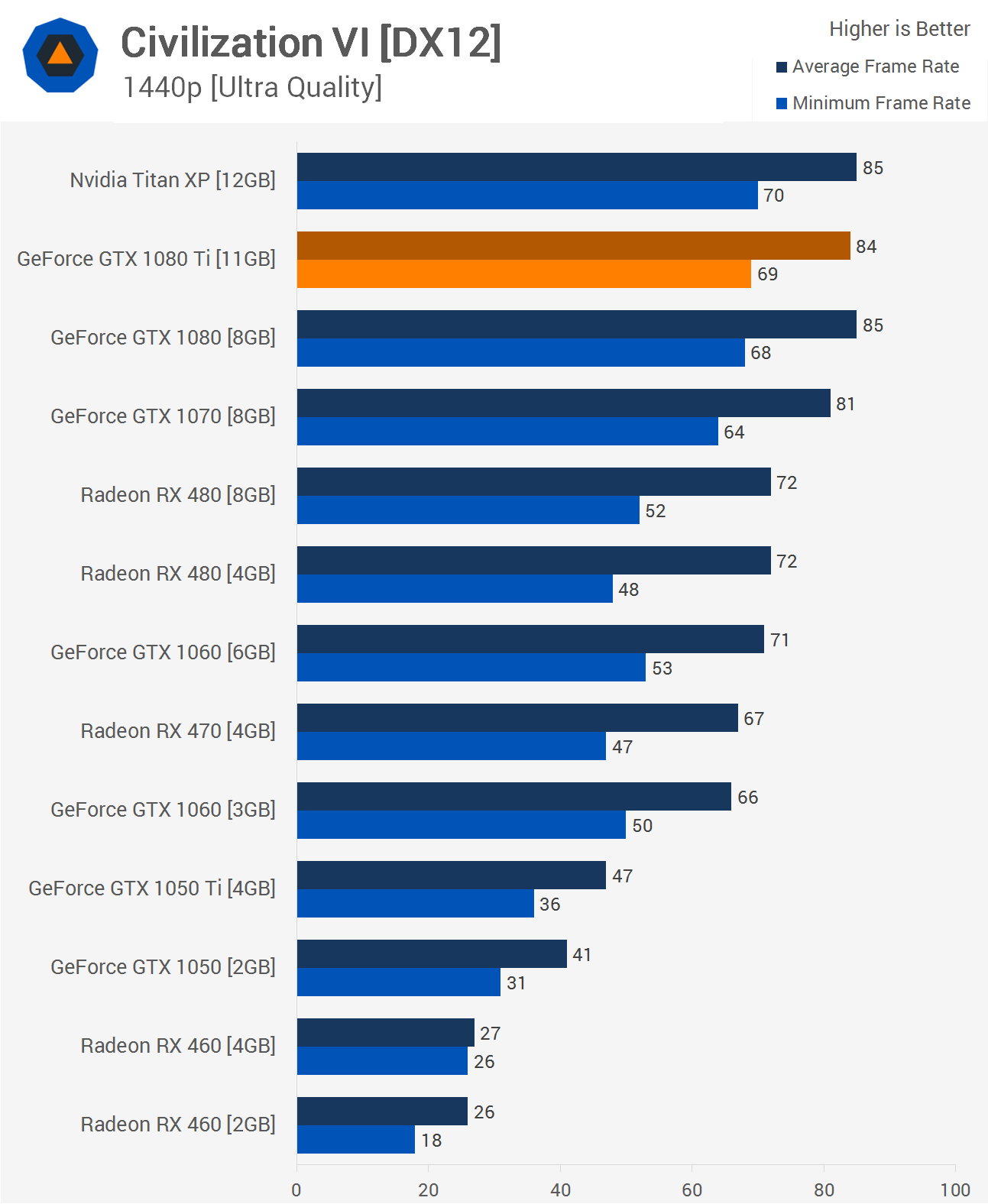
Civilization Half-dozen is a rather CPU demanding game and is therefore quite well known for imposing a CPU clogging, here we meet the 1080, 1080 Ti and Titan XP capped out at 85 fps. Moving to 1440p the high-end GPU'due south are nonetheless performance limited.
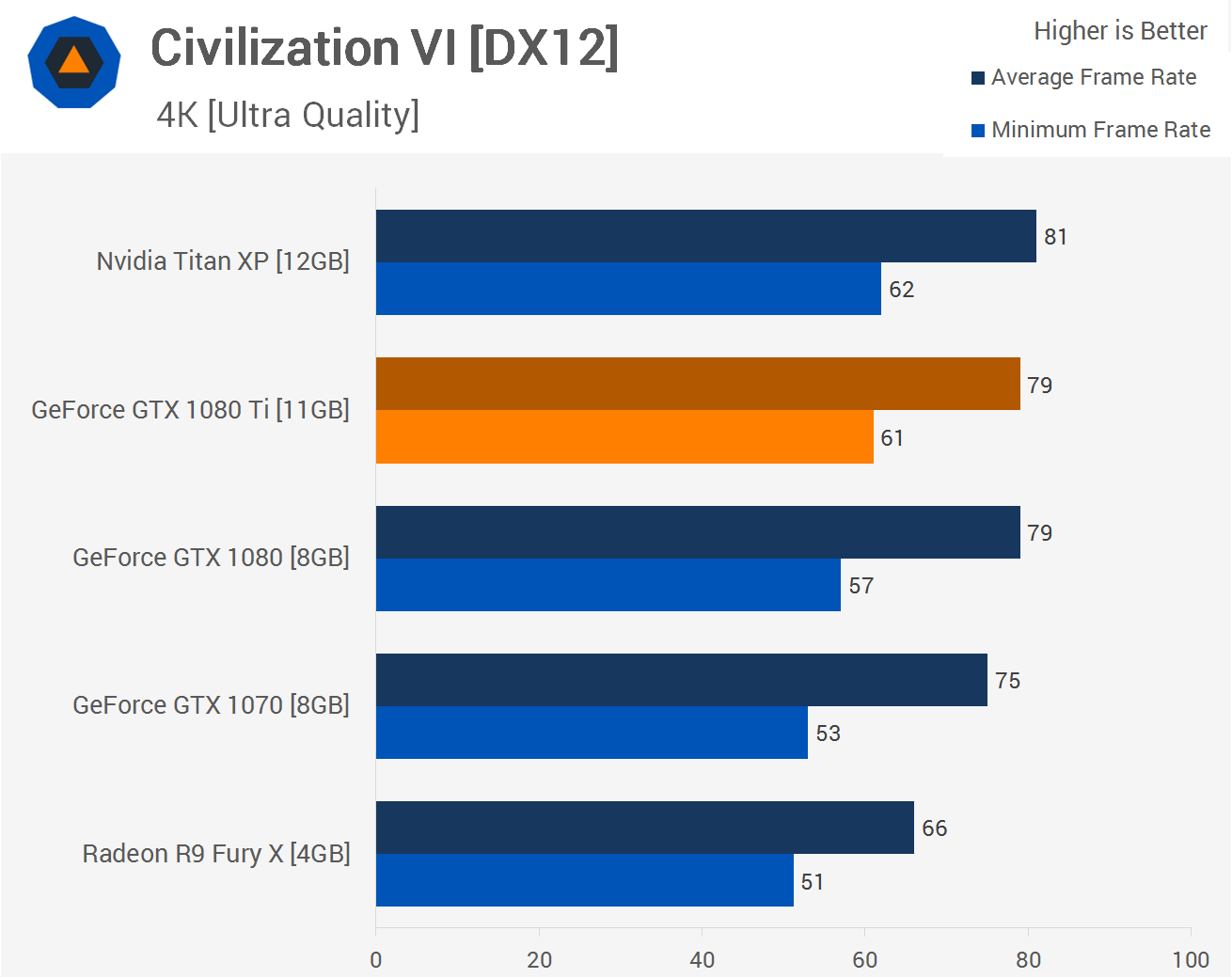
Event at 4K we discover that the higher-end GPUs all deliver very similar results, the good news existence that all cards tested are capable of delivering playable functioning at this resolution.
Source: https://www.techspot.com/review/1352-nvidia-geforce-gtx-1080-ti/
Posted by: dietrichshant1960.blogspot.com


0 Response to "Nvidia GeForce GTX 1080 Ti Review"
Post a Comment